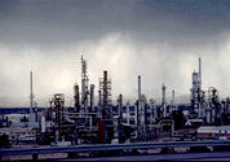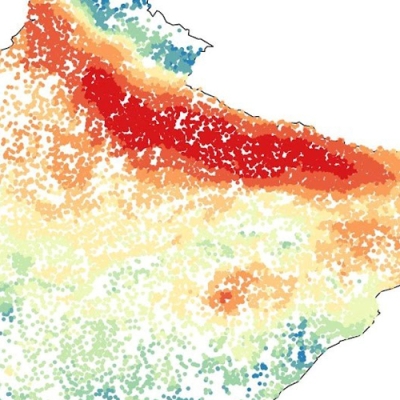For several years the Intergovernmental Panel on Climate Change has been updating databases, models, and predictions for greenhouse gas emissions expected to occur worldwide over the next 100 years. The Panel delegated this task to an international group of scientists, known as Working Group III of the IPCC, in 1996. The group released The Special Report on Emissions Scenarios (SRES) in spring 1999, for peer review.
"The SRES process is an international effort to take the best knowledge of the issues and incorporate it into emissions scenarios and modeling," said Steven Smith of the National Center for Atmospheric Research (NCAR) in Boulder, Colorado, and a member of the SRES writing team. The team, led by Nebojsa Nakicenovic of the International Institute for Applied Systems Analysis in Austria, includes members from the United States, the United Kingdom, the Netherlands, France, Russia, Poland, Japan, China, India, Brazil, Tanzania, and elsewhere.
The IPCC, organized in 1988, had last updated its scenarios for predicted future emissions in 1992, Smith said. "We're working on qualitative improvement of the scenarios," he said.
The team developed four marker scenarios, factoring in different assumptions about population growth, economic growth patterns, environmental values, technology change, energy sources, and land use patterns. Each prospect generated a range of possible worldwide, greenhouse gas emissions. Emissions scenarios are used in general circulation models (GCMs) to estimate the magnitude of climate change over various periods.
All four models predicted steadily increasing greenhouse gas emissions and global average temperatures in the first years of the coming century. "Climate change is steady," Smith said. "It's a big, heavy ship that you can't turn easily." The SRES team has not determined probabilities for the different scenarios, and none of the scenarios assumed intervention by governments to reduce human effects on the global climate system.
The most difficult task in assessing climate change is separating human-caused change from natural climatic variability, Smith said. Scientists think that aerosol sulfates (primarily sulfur dioxides), mostly from fossil fuel combustion but also created naturally by volcanoes, up until now have offset about half of human-caused global warming, because sulfates reflect sunlight.
But the cooling effect of sulfates will be less important in the next century if emission trends continue, Smith said, because there is a strong consensus among scientists that sulfur dioxide levels will decrease over the next 100 years. Sulfur dioxide emissions have been a main target of clean air regulation in the U.S. since the 1970s. In addition, the accelerating use of fossil fuels worldwide is expected to overwhelm the masking effect of sulfates. "Climate change effects are anticipated to be greater than in the old scenarios," Dr. Smith said.
The final draft of the SRES is being circulated for peer review to help further refine and strengthen it. Ultimately the finished product will be incorporated into the IPCC's third assessment on global climate change that is currently just getting under way.
Because IPCC assessments entail significant potential for wide policy and scientific impact (the 1990 IPCC report formed the basis for the 1992 Framework Convention on Climate Change negotiations), the IPCC panel implemented an "Open Process" for discussion in 1998 and early 1999 with assistance from the Center for International Earth Science Information Network (CIESIN), at the Columbia Earth Institute.
At CIESIN, a web-based information system has provided open access to the detailed IPCC scenarios and to the model results. The site established a forum where scientists and policy makers around the world can provide inputs and feedback. Open process participants were also able to use the site to submit alternative scenarios for consideration by the SRES team. CIESIN is working to archive the SRES scenarios and, after the SRES is approved and released by the IPCC, to disseminate them through NASA's Socioeconomic Data and Applications Center (SEDAC).
"Criticisms improve the process," Smith said. "It would be a welcome result to create more discussion among policy makers and the public about human contributions to climate change," he said. "We have to have a process to deal with uncertainty -- a constant in science and arguably, even in life -- and not wait for better results."
For more information
NASA Socioeconomic Data and Applications Center (SEDAC)
National Center for Atmospheric Research
| About the remote sensing data used | ||
|---|---|---|
| Sensor | Center for International Earth Science Information Network (CIESIN) | |
| Parameter | human-caused climate change | |
| DAAC | NASA Socioeconomic Data and Applications Center (SEDAC) | |

